Our Products
Please Note if a Product is Not Listed Contact Us About Its Availability
Gypsum
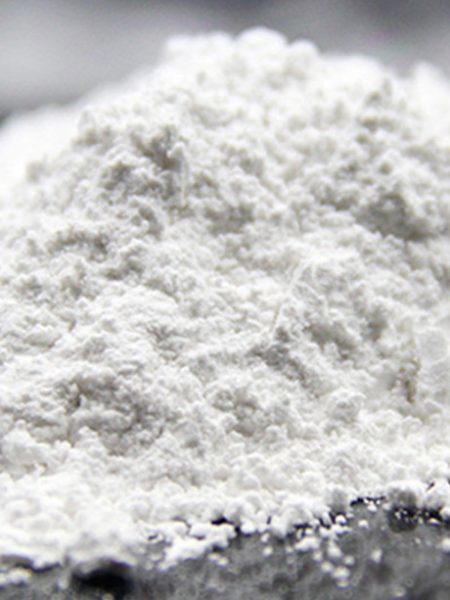
Gypsum is a naturally occurring mineral that has a variety of industrial uses. It is composed of calcium sulfate and is widely recognized for its fire resistance, insulation properties, and versatility as a construction material.
In the construction industry, gypsum is used as a key component in the production of drywall, plaster, and other building materials. It is also used in the production of Portland cement, which is a key component in the construction of buildings, bridges, and other infrastructure.
Gypsum is also used in the agricultural sector, as a soil amendment and as a source of sulfur for crops. It is also used in the production of glass, ceramics, and other industrial products.
The demand for gypsum is driven by the growth of the construction and agricultural industries, as well as the increasing demand for environmentally friendly building materials and sustainable agricultural practices. With the increasing demand for gypsum, the market for this product is expected to continue to grow in the coming years.
Rock
Powder
Agricultural
Calcium Carbonate

Calcium carbonate is a widely occurring chemical compound composed of calcium, carbon, and oxygen. It is widely used in various industries due to its versatility and numerous applications. In the construction industry, calcium carbonate is used as a raw material in the production of cement, which is in high demand as the construction sector continues to grow. Calcium carbonate is also used as a filler in the manufacture of paint, plastic, and rubber products.
In the pharmaceutical industry, calcium carbonate is used as a dietary supplement, providing a source of calcium for individuals who may not be getting enough of this important mineral through their diet. In the agriculture industry, calcium carbonate is used as a soil amendment, providing essential nutrients to crops and improving soil structure.
The demand for calcium carbonate is driven by various industries, including construction, agriculture, and pharmaceuticals. The increasing demand for these products and the growing population is driving the demand for calcium carbonate, which is expected to increase in the coming years.
Coated
Non-Coated
Industrial Salt
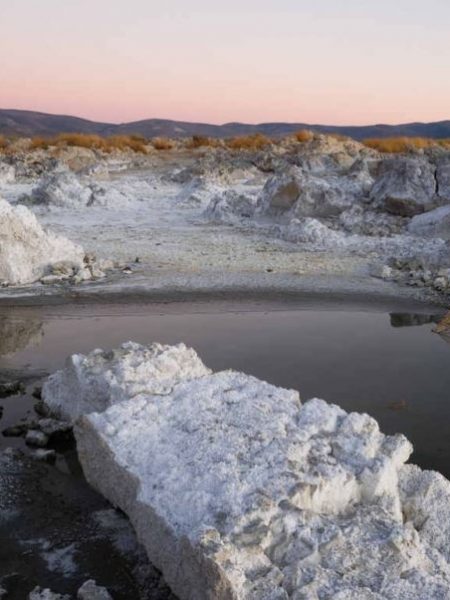
Industrial salt, also known as sodium chloride, is a mineral that is widely used in various industries due to its versatility and numerous applications. In the chemical industry, industrial salt is used as a raw material in the production of chlorine, caustic soda, and other chemicals. In the food industry, industrial salt is used as a preservative, flavor enhancer, and ingredient in the production of various food products.
In the oil and gas industry, industrial salt is used in the process of water treatment and the removal of impurities from natural gas. In the agriculture industry, industrial salt is used as a soil amendment, providing essential nutrients to crops and improving soil structure.
The demand for industrial salt is driven by various industries, including chemicals, food, oil and gas, and agriculture. The increasing demand for these products and the growing population are driving the demand for industrial salt, which is expected to increase in the coming years.
De-icing Salt
Rock Salt
Raw Salt
Drilling Salt
Customized Size Salt
Salt
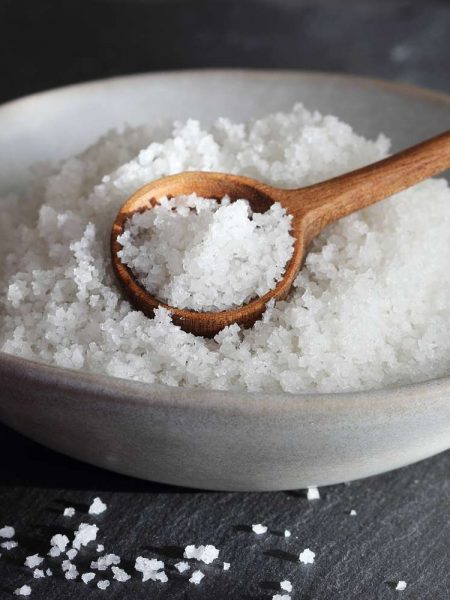
Edible salt is a commonly used seasoning and preservative in the food industry. It is a mineral composed of sodium and chloride and is widely available in various forms and varieties. Some of the most common forms of edible salt include table salt, sea salt, Himalayan salt, and kosher salt, each with its unique flavor, texture, and color.
In the food industry, it is used in the production of processed foods, such as canned goods, baked goods, and snack foods, as well as in the preparation of sauces, condiments, and soups.
In addition to its culinary uses, edible salt has numerous health benefits when consumed in moderation. It helps regulate fluid balance in the body, aids in the transmission of nerve impulses, and helps maintain healthy bones.
The increasing awareness of the importance of healthy eating and the growing popularity of specialty foods have led to a growing demand for different types of edible salt, including specialty salts and gourmet salts.
Table Salt
Coarse Salt
Himalayan Salt
Iodized Salt
Dishwasher Salt
Cement

Cement is a binding material that is used in the construction industry to make concrete. It is a powdery substance made from a mixture of materials, including limestone, clay, and iron ore. In the construction industry, cement is used in the production of concrete, mortar, and stucco. Within concrete production, cement provides strength and stability to the structure.
There are several types of cement available on the market, including Portland cement, masonry cement, and oilwell cement, each with its own specific properties and uses. Portland cement is the most common type of cement and is used in the majority of concrete projects.
With the global population growing and urbanization increasing, the demand for cement is expected to continue to grow in the coming years.
White Cement
Grey Cement
Marble Chips
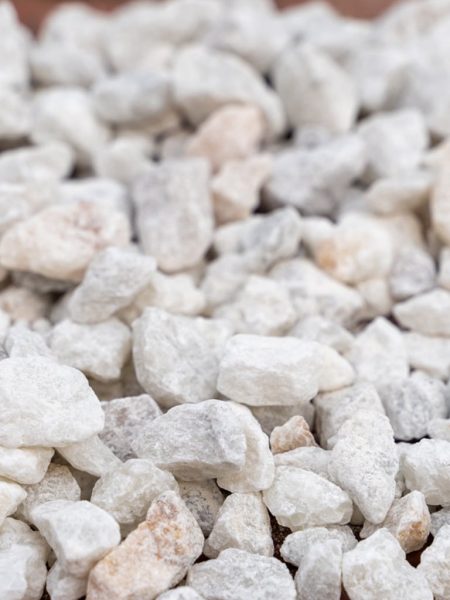
Marble chips, which are small pieces of marble, are a type of limestone that is prized for its beauty, durability, and versatility. In the construction industry, marble chips are used as a decorative material in landscaping, walkways, and driveways. They are also used in the production of terrazzo flooring and as a filler in concrete.
In the arts and crafts industry, marble chips are used as a medium for sculpting and as a decorative element in jewelry and other decorative items. They are also used in the production of architectural elements, such as moldings and columns, and as a decorative material in fountains and other water features.
With the increasing demand for high-end, durable, and visually appealing products, the demand for marble chips is expected to continue to grow in the coming years.
Quick Lime

Quicklime, also known as burnt lime, is a highly reactive form of calcium oxide that is produced by heating limestone to high temperatures. It is an essential material with a wide range of industrial applications, making it a key player in various industries.
In the construction industry, quicklime is used as a binding agent in the production of mortar, plaster, and stucco. It is also used as a flux in the production of iron and steel, reducing the melting point of the ore and removing impurities.
In the chemical industry, quicklime is used as a reagent in the production of chemicals, such as calcium carbide and calcium hydroxide. It is also used as a neutralizing agent in the treatment of waste and water, as well as in the production of chlorine and caustic soda.
Hydrated Lime
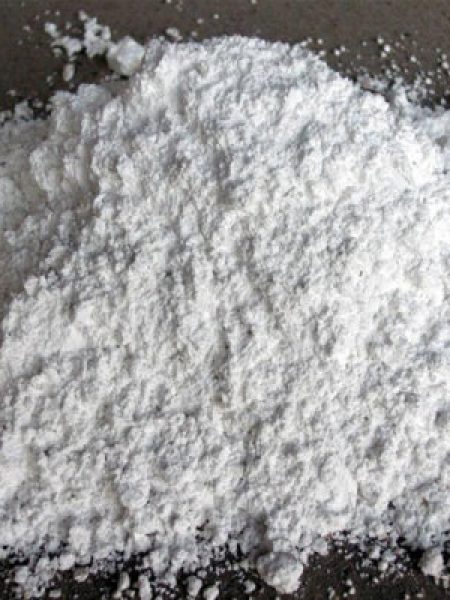
Hydrated lime, also known as slaked lime, is a type of calcium hydroxide that is produced by reacting quicklime with water. It is a versatile material with a wide range of industrial applications, making it an important player in various industries.
In the construction industry, hydrated lime is used as a binding agent in the production of mortar, plaster, and stucco. It is also used as a soil stabilizer and a component in the production of concrete.
In the chemical industry, hydrated lime is used as a neutralizing agent in the treatment of waste and water. It is also used in the production of chemicals, such as calcium salts and calcium hydroxide.
Soda Ash
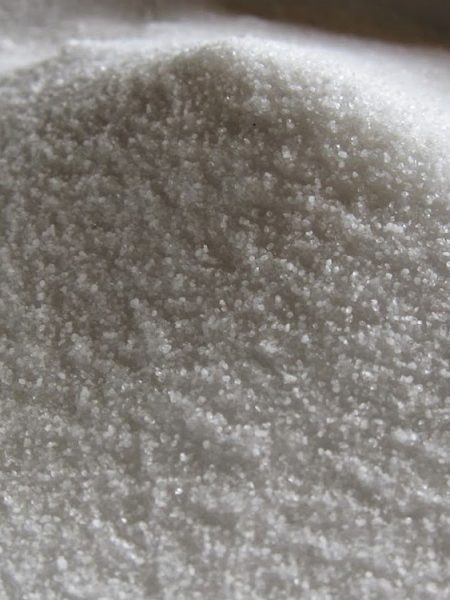
Soda ash, also known as sodium carbonate, is a highly valued industrial chemical with a wide range of applications and a growing demand. Soda ash is a white, odorless powder that is used in various industries as a neutralizing agent and as a raw material in the production of other chemicals.
One of the primary uses of soda ash is in the glass manufacturing industry, where it is used as a fluxing agent to lower the melting temperature of silica and improve the clarity and strength of the final glass product. It is also used in the detergent and soap industry as a raw material in the production of sodium bicarbonate, a common ingredient in cleaning products.
In addition, soda ash is widely used in the textile industry as a cleaning agent to remove impurities from fibers and improve their color and brightness. It is also used in water treatment to regulate pH levels and remove impurities, and in the paper industry as a strengthening agent.
Dense Soda Ash
Light Soda Ash
Caustic Soda
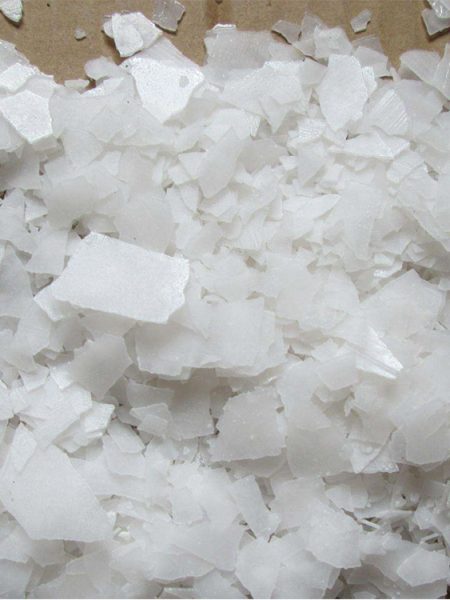
Caustic soda, also known as sodium hydroxide, is a highly reactive and in-demand chemical with a wide range of industrial applications. It is a white, odorless solid that is commonly used as an alkaline chemical in various industries.
In the pulp and paper industry, caustic soda is used in the pulping process to break down wood chips into pulp, as well as in the production of chlorine dioxide, a bleaching agent used to whiten paper. The soap and detergent industry also utilizes caustic soda as a raw material in the production of various cleaning products.
Caustic soda is also widely used in the oil refining industry for the production of alkylates, gasoline blending stocks, and olefins. In addition, it is used in the production of textiles, dyes, and pharmaceuticals, as well as in water treatment to adjust pH levels and remove impurities.
The demand for caustic soda continues to grow, driven by increasing industrialization and the growth of key end-use industries such as paper, textiles, and petroleum. As a result, caustic soda remains a critical component in many industrial processes and an essential part of a growing global economy.
Sodium Bicarbonate

Sodium Bicarbonate, also known as baking soda, is a white crystalline compound commonly used in various industries as a chemical leavening agent, fire suppression agent, cleaning and personal care product ingredient, and in the oil and gas industry as a drilling mud treatment.
In the food industry, it is used as a leavening agent in baked goods to produce carbon dioxide, leading to a lighter and fluffier texture. In the oil and gas industry, it is used to neutralize acidity in drilling muds and improve their flow properties. In the cleaning and personal care industry, sodium bicarbonate is used as an abrasive cleaner, as well as a component in toothpastes, deodorants and other personal care products.
The demand for sodium bicarbonate is driven by its versatility, effectiveness, and low cost. In recent years, the demand has increased due to the growing popularity of natural and organic personal care products, as well as the increasing demand for baking goods and the growth of the oil and gas industry.
Feed Grade
Food Grade
Starch
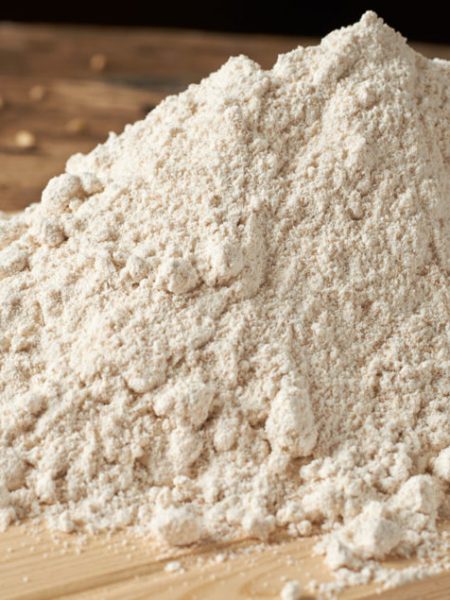
Starch is a complex carbohydrate that is commonly found in plants and serves as a primary source of energy. It is an essential ingredient in many industries, including food, paper, textile, pharmaceutical, and chemical industries.
In the food industry, starch is used as a thickener, stabilizer, and texturizer in various products, such as sauces, soups, and processed foods. In the paper industry, it is used as a sizing agent to improve the strength and surface quality of the paper.
In the textile industry, it is used as a sizing and finishing agent for fabrics. Additionally, in the pharmaceutical industry, it is used as a filler and binder in tablet production.
Wheat
Corn
Potato
Sulfur
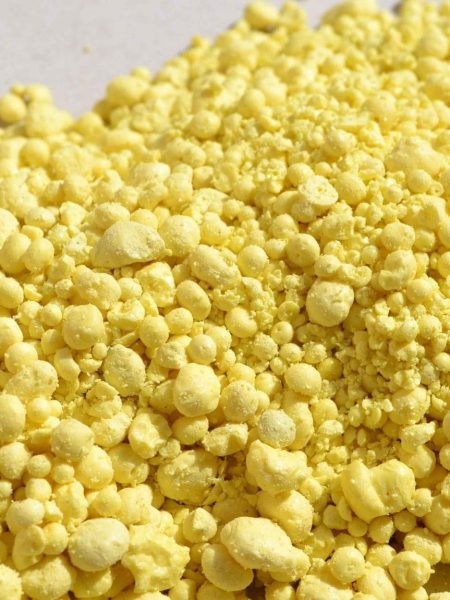
Sulfur is a non-metallic element that is widely used in various industries, including the chemical, agricultural, and petroleum industries. It is an essential component of various compounds, including sulfates, sulfides, and sulfites, which are used in the production of fertilizers, dyes, detergents, and preservatives.
In the chemical industry, sulfur is used as a raw material in the production of sulfuric acid, which is a key component in the manufacture of fertilizers, detergents, and dyes. In the agricultural industry, sulfur is used as a nutrient for crops and as a fungicide to control plant diseases. In the petroleum industry, it is used as a refining agent to remove impurities from crude oil and to improve the quality of gasoline and diesel fuels.
The demand for sulfur is driven by its widespread use in various industries and its essential role in the production of various chemicals and fertilizers. The demand for sulfuric acid, for example, is expected to continue to grow due to the increasing demand for fertilizers, detergents, and other products. Additionally, the growth of the petroleum industry is also expected to drive the demand for sulfur.
Lump
Pellet
Granule
Sodium Sulfate
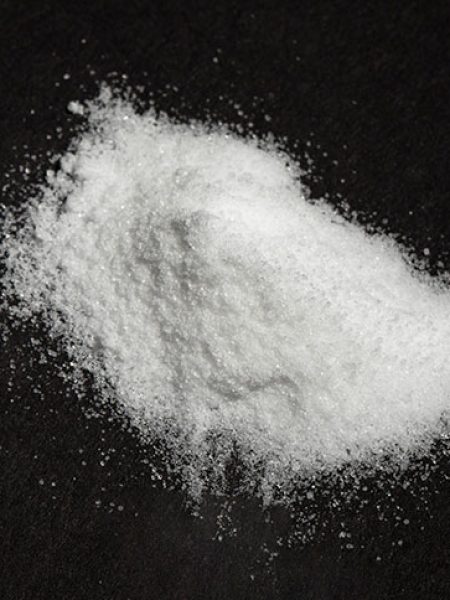
Sodium sulfate, also known as sulfate of soda, is a white crystalline compound widely used in various industries, including detergent, glass, and paper industries.
In the detergent industry, sodium sulfate is used as a filler and bulking agent, as well as a flow aid and anti-caking agent in the production of laundry detergents, dishwashing liquids, and other cleaning products. In the glass industry, it is used as a fluxing agent to improve the melting properties of silica and other raw materials in the production of glass. In the paper industry, it is used as a filler and to improve the strength and brightness of paper products.
The demand for sodium sulfate is driven by its versatility and effectiveness in various applications, as well as its low cost and readily available supply. The demand is expected to continue to grow due to the increasing demand for cleaning and personal care products, as well as the growth of the glass and paper industries.
Lump
Pellet
Granule
Iron Ore

Iron ore is a naturally occurring mineral that is widely used as a raw material in the steel and iron industries. It is composed of iron oxides and other minerals and is typically found in rocks and soils.
In the steel industry, iron ore is used as a primary raw material in the production of steel, which is used in various applications, including construction, transportation, and consumer goods. In the iron industry, it is used in the production of pig iron, which is further processed to produce wrought iron and steel.
The demand for iron ore is expected to remain strong in the future due to the increasing demand for steel in developing countries and the need for infrastructure development.
Clinker

Clinker is a hard, nodular material that is produced as a by-product of the cement manufacturing process. It is a mixture of alumina, silica, iron oxide, and calcium oxide, and is used as a raw material in the production of cement.
In the construction industry, clinker is an essential component in the production of cement, which is used as a binding agent in the production of concrete, mortar, and other building materials. The demand for clinker is driven by the growth of the construction industry and the increasing demand for infrastructure development and housing.
The demand for clinker is expected to remain strong in the future due to the continued growth of the construction industry and the increasing demand for infrastructure development and housing. This is especially true in developing countries, where the demand for housing and infrastructure is expected to grow significantly.
Grey Clinker
White Clinker
Feldspar
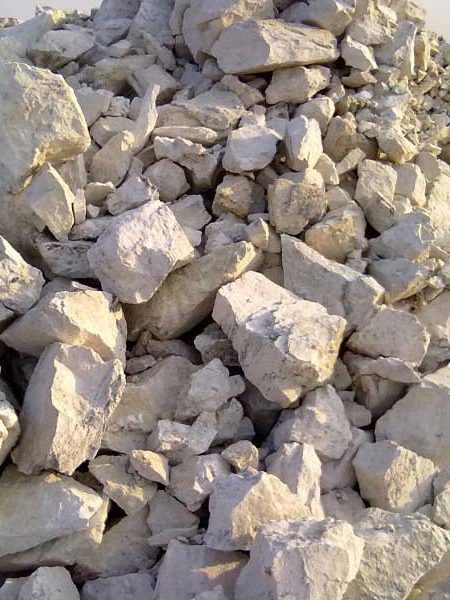
Feldspar is a group of abundant minerals that are widely used in various industries, including the ceramic, glass, and construction industries. It is composed of aluminum silicates and other minerals and is typically found in rocks and soils.
In the ceramic industry, feldspar is used as a fluxing agent to improve the melting properties of clays and other raw materials in the production of ceramic products, such as tiles, tableware, and sanitaryware. In the glass industry, it is used as a fluxing agent to improve the melting properties of silica and other raw materials in the production of glass products. In the construction industry, feldspar is used as a raw material in the production of ceramics and glass, which are used in various applications, including floor and wall tiles, windows, and doors.
Sodium Feldspar
Potassium Feldspar
Limestone
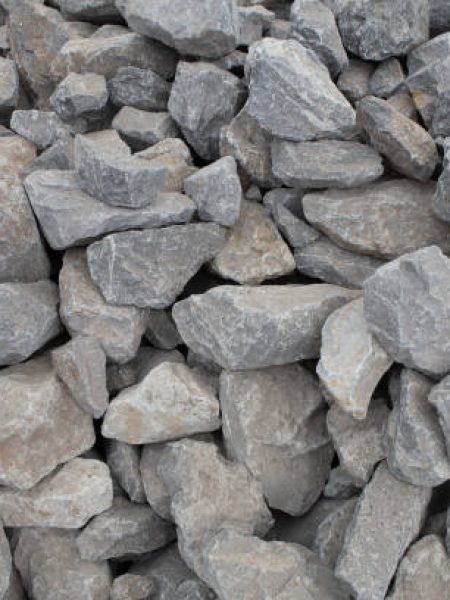
Limestone is a sedimentary rock composed primarily of calcium carbonate, and is widely used in various industries, including the construction, chemical, and agricultural industries.
In the construction industry, limestone is used as a building material, as well as an aggregate for concrete and asphalt production. In the chemical industry, it is used as a raw material in the production of lime, which is used in the production of various products, including paper, sugar, and steel. In the agricultural industry, it is used as a soil amendment to improve soil pH and provide essential nutrients to crops.
The demand for limestone is expected to continue to grow due to the increasing demand for building materials and infrastructure development, as well as the increasing demand for lime in the chemical and agricultural industries.
Grey Limestone
White Limestone
Barite

Barite, also known as barium sulfate, is a mineral composed of barium and sulfate and is widely used in various industries, including the oil and gas, paint, and plastic industries.
In the oil and gas industry, barite is used as a weighting agent in drilling mud to increase the density of the fluid, which helps to maintain the stability of the borehole. In the paint and plastic industries, it is used as a filler and extender, providing bulk, texture, and durability to various products.
The demand for barite is expected to continue to grow due to the increasing demand for oil and gas exploration, as well as the increasing demand for filler and extender products in the paint and plastic industries.
Kaolin
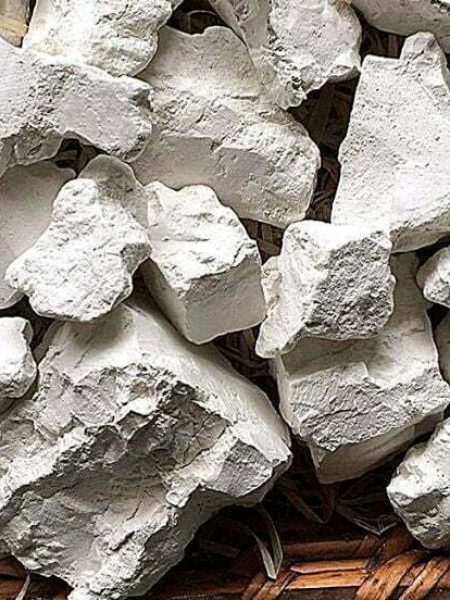
Kaolin, also known as china clay, is a naturally occurring clay mineral that is primarily composed of kaolinite. It is widely used in various industries, including the paper, ceramics, and personal care industries.
Kaolin is found in many regions worldwide, including the United States, Brazil, and China, and is typically formed from the weathering and alteration of feldspar-rich rocks.
In the paper industry, kaolin is used as a filler and coating pigment, providing brightness, smoothness, and bulk to paper products. In the ceramics industry, it is used as a raw material in the production of porcelain and other ceramic products, such as tiles and tableware. In the personal care industry, it is used in products such as skin creams, lotions, and deodorants as an absorbent and skin-protecting ingredient.
There are various types of kaolin, including calcined kaolin, which is produced by heating kaolin to high temperatures, and metakaolin, which is produced by further heating calcined kaolin. The type of kaolin used in a particular application depends on the desired properties and end-use requirements.
Gilsonite

Gilsonite, also known as uintaite, is a naturally occurring hydrocarbon material that is primarily composed of carbon and hydrogen. It is found in the Uinta Basin in Utah, USA, and is widely used in various industries, including the oil and gas, paint, and asphalt industries.
In the oil and gas industry, gilsonite is used as a component in well drilling mud, helping to reduce friction and improve the efficiency of drilling operations. In the paint and asphalt industries, it is used as a modifying agent, providing improved hardness, adhesion, and durability to various products.
There are various types of gilsonite, including powdered gilsonite, which is produced by milling the material into a fine powder, and pelletized gilsonite, which is produced by compressing the material into pellets. The type of gilsonite used in a particular application depends on the desired properties and end-use requirements.
Urea

Urea, also known as carbamide, is a naturally occurring organic compound that is primarily composed of nitrogen and carbon. It is widely used in various industries, including the fertilizer, animal feed, and pharmaceutical industries.
In the fertilizer industry, urea is used as a nitrogen-rich fertilizer, providing essential nutrients to crops and improving their growth and yield. In the animal feed industry, it is used as a protein supplement, helping to improve the growth and health of livestock. In the pharmaceutical industry, it is used as a component in various products, such as skin creams, wound dressings, and oral medications.
There are various grades and forms of urea, including prilled urea, which is produced by granulating the material into small, spherical pellets, and urea solution, which is produced by dissolving urea in water. The type of urea used in a particular application depends on the desired properties and end-use requirements.
Oil

Cooking oils and oleins are essential ingredients in the food industry and are widely used in cooking, frying, and baking. These oils are extracted from various sources such as plants, seeds, and nuts. There are various types of cooking oils available in the market, including vegetable oils (canola, soybean, corn, etc.), olive oil, palm oil, and palm olein.
Palm olein is a type of vegetable oil derived from the palm fruit and is commonly used in Southeast Asia, Africa, and South America. It is known for its high smoke point, which makes it ideal for deep-frying and high-heat cooking.
On the other hand, cooking oil is a generic term used to describe any edible oil that is used in cooking. It is commonly used in households and restaurants for various cooking purposes, such as stir-frying, sautéing, and baking.
In conclusion, cooking oils and oleins are in high demand in the food industry and are essential ingredients for various cooking and frying applications. They come in different types, each with its unique properties, flavor, and nutritional value, making them versatile ingredients for different culinary purposes.
Palm Olein
Sunflower Oil
Corn Oil
Coconut Oil
Ghee
Tomato Paste
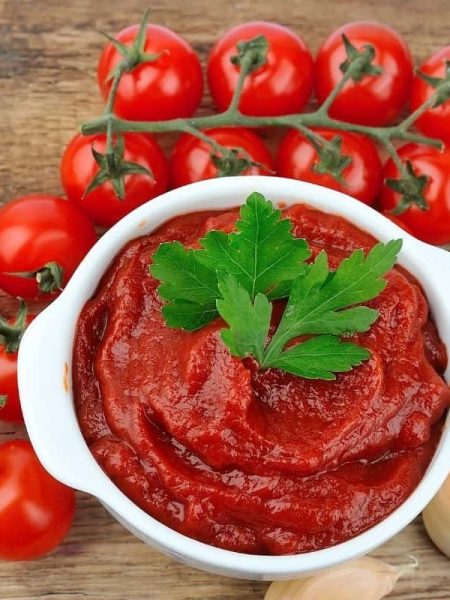
Tomato paste is a thick, concentrated form of tomato puree that is used as a base ingredient in various food products, such as sauces, soups, stews, and marinades. The paste is made by cooking and reducing fresh tomatoes until they reach a dense, thick consistency.
Tomato paste has its origins in the Mediterranean region, where it has been used as a key ingredient in traditional dishes for centuries. Today, tomato paste is produced and consumed globally, with major producers located in countries such as Italy, Spain, and the United States.
In the food industry, tomato paste is valued for its versatility and ability to add flavor and depth to various dishes. It is also commonly used as a base ingredient in tomato sauce, pizza sauce, and ketchup, as well as in various meat and vegetable dishes.
400g Container
800g Container
Rice

Rice is a staple food grain that is widely cultivated and consumed around the world. It is the primary source of food for over half of the world’s population and is grown in over 100 countries.
There are many different types of rice, each with unique characteristics such as grain size, color, flavor, and cooking properties. Some of the most popular types of rice include white rice, brown rice, basmati rice, jasmine rice, arborio rice, and glutinous rice.
In the food industry, rice is widely used as a staple ingredient in a variety of dishes, including main courses, sides, and desserts. It is also used as a base ingredient in many processed food products, such as crackers, cereal, and snacks.
White Sella 1121
Golden Sella 1121
Steam 1121
Flour
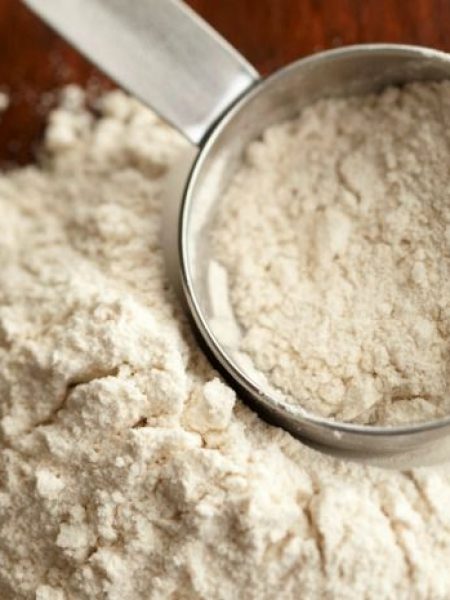
Flour is a powdery substance made from grinding cereal grains, such as wheat, corn, rye, or barley. It is the primary ingredient in many baked goods, including bread, cakes, pastries, and cookies.
There are many different types of flour, each with unique characteristics and uses. Some of the most common types of flour include all-purpose flour, bread flour, whole wheat flour, self-rising flour, and cake flour.
All-purpose flour is the most versatile type of flour and can be used for a wide range of baked goods. Bread flour, as the name suggests, is specifically formulated for making bread and has a higher protein content. Whole wheat flour is made from the entire wheat kernel and is higher in fiber and nutrients. Self-rising flour is a mixture of flour, baking powder, and salt and is used for making cakes, biscuits, and other baked goods. Cake flour is a fine-textured flour that is used for making delicate cakes and pastries.
All-Purpose Flour
Bread Flour
Sugar
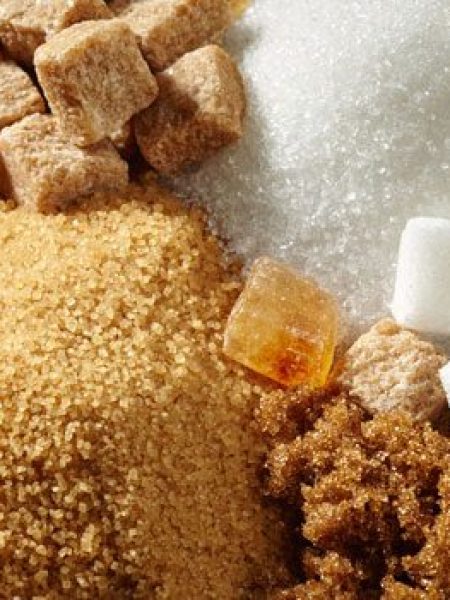
Sugar is a sweet, crystalline substance that is widely used in food and beverage production as a flavor enhancer and sweetener. It is derived from sugar cane, sugar beets, and other sweet-tasting plants, and is produced through a process of extraction, refining, and crystallization.
There are several different types of sugar, each with unique characteristics and uses. Some of the most common types of sugar include granulated sugar, brown sugar, powdered sugar, and raw sugar.
Granulated sugar is the most commonly used form of sugar and is used in a wide range of baked goods and other food and beverage products. Brown sugar is a form of granulated sugar that contains molasses, giving it a distinctive color and flavor.
In the food and beverage industry, sugar is an essential ingredient in many products, including baked goods, candies, soft drinks, and other sweets.
Brown Sugar
White Sugar
Legumes

Legumes are a diverse group of plant-based foods that are prized for their high protein content and versatility in cooking. They include a wide variety of beans, lentils, chickpeas, and other similar foods, and are a staple food in many cultures around the world.
In terms of uses, legumes have a variety of applications in the food industry. They are often used as a protein source in vegetarian and vegan dishes, and are a common ingredient in soups, stews, and other dishes. They can also be made into flour, pasta, and other food products, and are a popular ingredient in many ethnic cuisines.
There are many different types of legumes, each with unique characteristics and uses. Some of the most common types of legumes include black beans, kidney beans, chickpeas, lentils, and navy beans. These legumes can be found in many different forms, including whole, split, and ground, and they can be used in a wide range of recipes and dishes.
Lentils
Chickpeas
Broad Beans
Canned Baked Beans
Dairy

Dairy refers to the milk and milk-based products that are produced by various animals, such as cows, goats, sheep, and buffalos. Milk is an excellent source of protein, calcium, and other essential nutrients, and has been an important part of human diets for thousands of years. Some common dairy products include fluid milk, cheese, butter, yogurt, and ice cream.
Dry curd is a form of cheese that is made by removing the moisture from curdled milk. This type of cheese has a longer shelf life and is often used in dishes such as pizzas and pasta sauces.
Milk powder, on the other hand, is a dairy product made by evaporating the moisture from fluid milk. This process results in a powder that can be easily stored and transported, making it a popular ingredient in various food products, such as instant soups, sauces, and baking mixes. Milk powder is also a source of protein, calcium, and other essential nutrients, and can be reconstituted with water to produce liquid milk.
Milk Powder
Evaporated Milk
Dry Curd
Pickles

Pickles are a popular food item that are made by preserving cucumbers or other vegetables in vinegar or brine. Pickling is a traditional method of food preservation that has been used for centuries, and pickles are enjoyed for their tangy, salty flavor and crunchy texture.
In terms of use, pickles are typically served as a condiment or snack food. They can be eaten on their own or used as a topping on sandwiches, burgers, and other foods. Pickles are also a common ingredient in many dishes, such as potato salad and coleslaw, and can be used to add flavor and texture to a variety of recipes.
Some of the most common types of pickles include dill pickles, bread and butter pickles, sweet pickles, and sour pickles. These pickles can be found in many different forms, including whole pickles, sliced pickles, and pickle chips, and they can be made from a variety of vegetables, including cucumbers, green beans, and red onions.
Pickled Cucumber
Pickled Green Pepper
Pickled Mixed Veg
Jams

Jams are a popular food item that are made by cooking fruit, sugar, and pectin together to create a sweet, spreadable condiment. Jams have a long history and are enjoyed for their sweet, fruity flavor and versatility.
In terms of use, jams are typically used as a topping for toast, bread, and other baked goods. They can also be used as an ingredient in a variety of recipes, such as cakes, pies, and sauces. Additionally, jams are often used as a filling for pastries and as a topping for ice cream and other desserts.
There are many different types of jams, each with unique flavors and uses. Some of the most common types of jams include strawberry jam, raspberry jam, blueberry jam, and peach jam.
Carrot Jam
Sour Cherry Jam
Dried Herbs

Dried herbs are a type of food ingredient that is made by preserving herbs in a dry form. This can be done through a variety of methods, including air-drying, dehydrating, and freeze-drying. The end result is a product that has a longer shelf-life than fresh herbs and can be used as a convenient and flavorful ingredient in cooking.
In terms of use, dried herbs are commonly used in a variety of recipes, including soups, stews, sauces, and marinades. They can also be used to season meat and vegetables, or to add flavor to breads and baked goods. Additionally, dried herbs are often used in the preparation of herbal teas and infusions and are used in traditional medicine as natural remedies.
There are many different types of dried herbs, each with unique flavors and uses. Some of the most common types of dried herbs include basil, oregano, thyme, rosemary, and sage. These herbs can be found in whole leaf form, or as ground powder.
Coriander
Cumin
Parsley
Mint
Thyme
Basil
Onion
Dill
Mallow Flower
Dried Rose Buds
Barberries
Dried Fruits

Dried fruits are a type of food product that are made by removing the moisture content from fresh fruits through various methods such as sun-drying, kiln drying or using specialized dehydrators. These fruits are available in a range of varieties including apples, apricots, bananas, cranberries, figs, grapes, mangoes, peaches, pears, prunes, raisins, and many others.
Dried fruits have several uses in various industries such as food and beverage, confectionery, cosmetics, and pharmaceuticals. They are popular ingredients in baked goods, trail mix, granola bars, energy bars, and fruit snacks. In confectionery, they are used in candies and chocolates to add flavor and texture. In cosmetics, they are used as natural exfoliants in scrubs, face masks and body washes. Additionally, dried fruits are a rich source of vitamins, minerals, and fiber and are therefore used in the production of dietary supplements.
The demand for dried fruits is increasing due to the growing popularity of healthy snack options and the increasing demand for natural ingredients in food and personal care products. The increasing interest in organic and non-GMO products is also fueling the demand for dried fruits. The global dried fruit market is expected to grow at a significant rate in the coming years, providing ample opportunities for businesses in this sector.
Raisin
Prune
Fig
Peach
Mango
Pineapple
Berries
Apple
Pomegranate
Sweets

Sweets refer to a type of confectionery or dessert that is characterized by its sweet taste and high sugar content. Sweets have been a part of human diets for thousands of years and come in many different forms, including candies, chocolates, cakes, and other baked goods.
Rock candy is a type of sweet that is made by crystallizing sugar syrup. It is often used as a decorative element in desserts or as a sweet snack on its own. Rock candy can come in a variety of colors and flavors and has a hard, crunchy texture that is popular among candy lovers.
Nougat is another type of sweet that is made from sugar, honey, and egg whites, and is often mixed with nuts or dried fruit. It is a soft, chewy treat that is often found in candy bars or used as a filling in chocolate confections. Nougat is known for its sweet, nutty flavor and is a popular ingredient in many traditional sweets and desserts.
Overall, sweets play an important role in human diets and provide a source of energy, but they should be consumed in moderation as they are high in sugar and can contribute to various health problems if consumed excessively.
Rock Candy
Nougat
Floury Nougat
Honey

Honey is a sweet, viscous substance that is produced by bees from the nectar of flowers. It is made up of sugar, enzymes, and other compounds and has been used as a sweetener and flavor enhancer for thousands of years.
Honey is a natural alternative to refined sugars and has a unique flavor profile that depends on the type of flowers from which the nectar was gathered. It is also rich in antioxidants and has antibacterial and anti-inflammatory properties, making it a popular ingredient in both traditional and modern medicine.
Honeycomb is a unique type of honey that includes pieces of the beeswax comb in which the honey is stored. Honeycomb honey is minimally processed, preserving the natural flavor and texture of the honey and the wax comb. It is often enjoyed as a snack, spread on toast, or used in baking and cooking.
Honey
Honeycomb
Saffron

Saffron is a spice derived from the dried stigmas of the crocus flower, Crocus sativus. It is considered one of the most expensive spices in the world, valued for its unique flavor, aroma, and vivid yellow-orange color.
There are three main types of saffron: Super Negin, Negin, and Sargol. Super Negin is considered the highest quality saffron known for its long, unbroken stigmas, deep red color, and intense flavor. Negin is of slightly lower quality and has shorter stigmas, but it is still considered a high-quality saffron. Sargol is the most basic type of saffron, and consists of pure red stigmas, without the yellow style. It has a more intense flavor and color than Negin or Super Negin, but is less versatile in cooking.
Saffron has a long history of use in traditional cooking and medicine and is widely used in cuisines worldwide, including in Indian, Persian, and Mediterranean dishes. It is known for its distinct, earthy flavor and is often used to enhance the taste and color of rice, sauces, and stews.
